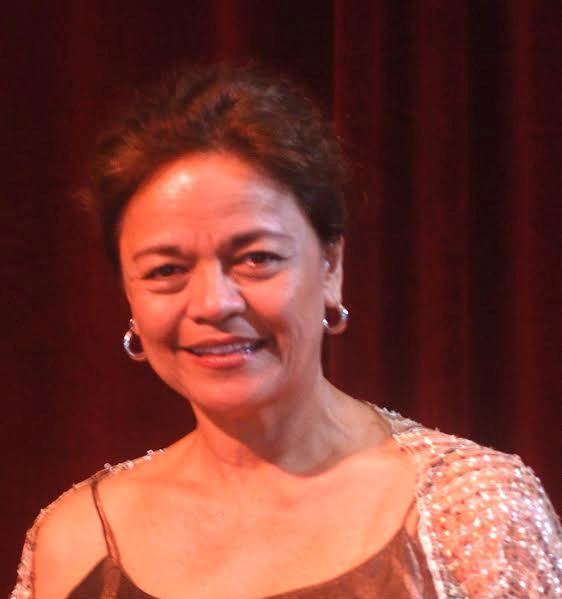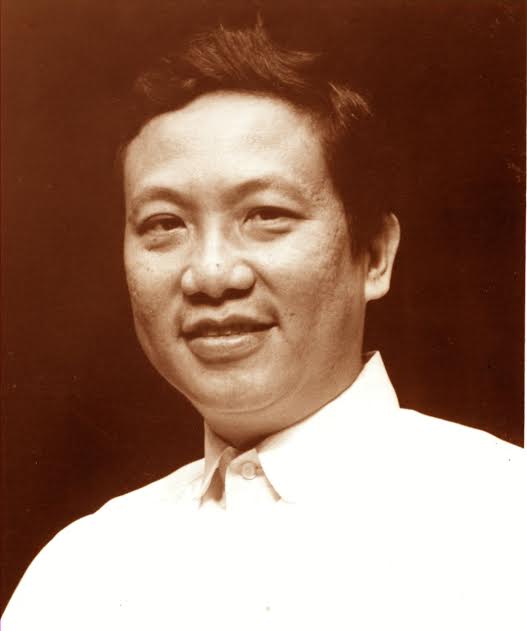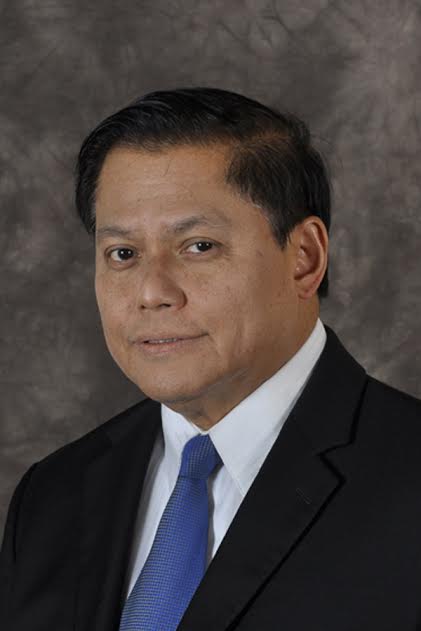





The Cultural Center of the Philippines is turning 50 years old in 2019. A creation of Imelda Marcos, it initially met with public outcry because of the huge sum of money poured into its construction. It was viewed as the product of the whim and caprice of an ambitious First Lady who favored Western art and foreign artists.
But since the 1986 Edsa Revolt, CCP has plodded on and done its work of defining a national culture.
It has responded to the call of the times, moving away from its elitist orientation to one that is, in the words of former CCP artistic director Nicanor G. Tiongson, “people-oriented, participative and proudly Filipino.”
We asked past and present CCP leaders their thoughts about CCP and the ideal CCP leader.
What does it take to lead CCP? What does it take to be the leader of an arts and culture institution?
Nicanor G. Tiongson, former CCP artistic director: The leader of CCP has to have a vision. A vision for a national culture. It must be a vision that is from below. It is not elitist. It has to be people oriented.
CCP is a flagship institution for culture. Therefore, it is the obligation of CCP to produce the kind of arts or artworks that will express the Filipino soul. Obviously the leader of CCP must have knowledge of Filipino arts. He must understand the folk and ethnic cultures of the Filipinos. It should be a knowledge that has empathy with these cultures. Not a nodding acquaintance but one that respects and understands the cultures within their own context so that you can see how all of these cultures can actually help to create a truly national culture … Democratic consultation is key to leading CCP.
Emily A. Abrera, CCP chair: To lead any kind of organization requires “people” skills, experience and familiarity with the field you’re involved in, and a continuing interest in it. The first is the most important because the job of the leader is rooted in her ability to listen and to guide discussions adeptly so that all are heard and the decisions reached are the appropriate ones. And especially for a government institution, we have a mandate to serve as wide a constituency as possible.
Baltazar N. Endriga, former CCP chair and president: To lead CCP or other arts and culture institution requires the following qualities: a sincere and intense appreciation and love for the arts, the artists and the importance of their contributions to society; managerial and administrative abilities; willingness to sacrifice personal interest; absence of a conflict of interest; sincere concern for the welfare of employees and artists; constant vigilance; uncommon courage to protect the institution; ability to persevere, maintaining and enhancing CCP’s physical and financial resources as well as organize its human resources so that there is effective delivery of services; thorough knowledge of the institution’s raison d’etre and its strategic direction; and ability to inspire employees, the board, and the institution’s publics.
Raul M. Sunico, CCP president: One must have trust and confidence in the people you work with. One must have a lot of public relations in order to foster goodwill and camaraderie among the different stakeholders, foreign partners and the community in general. It takes a lot of managerial, financial and artistic experience to be able to coordinate the many facets of CCP operations. It takes perseverance, patience in dealing and establishing good rapport between CCP and other agencies.
Fernando C. Josef, former CCP artistic director: It must be somebody who has the heart and the mind, the skills to make a change. The change we need is huge. Dapat alam ang history of arts and culture, evolution, the good and the bad, who can effect or filter the good arts and culture traditions that sustain the way generations after generations. We need leaders whose intentions are not self-serving.
Nestor O. Jardin, former president and artistic director: He or she has to understand the needs of the arts sector and have a cohesive plan to answer those needs. As far as CCP is concerned, it is important to have the ability and integrity to manage the physical resources, source its financial requirements and, most importantly, inspire and lead CCP’s officers, staff and artists to work toward a common vision.
Unwavering commitment
Chris B. Millado, CCP artistic director: An unwavering commitment to the mission and vision of CCP, the ability to continually inspire artists, managers and communities to participate in art making and creation; and the capacity to manage resources both human and financial in order to achieve these goals.
When you came in as officer, what contributions of the previous CCP officers did you build on? Why? What did you do to build on those?
Abrera: So much has been done at CCP. There’s Nes Jardin who had the vision to begin work on an Asset Development Plan. Our board members include both business leaders and accomplished artists/art lovers who have given their time and expertise, so that today we are much closer to finding a developer who can make it happen. The goal is to be able to develop all our assets, and earn sufficiently from them so that we do not have to rely on subsidies forever, and we can do more.
Raul Sunico has continued the work started by Nes, and we are fortunate that the good programs begun by others are continued and improved upon, like the Gawad CCP program, the National Artist Awards, 13 Artists and many more.
Cinemalaya has breathed new life into the movie industry by inspiring the production of independent films. Not only does it draw increasingly large crowds, it has also added a distinct Asian flavor to its menu. And today the festival occurs simultaneously in several cinemas aside from CCP venues.
Our Virgin Labfest has quite a following. Since a couple of years ago, we have been able to show one-act plays in other Filipino languages, not just Tagalog. The plays have gone on tour as well, thanks to new sponsors.
The Pasinaya festival now casts a wider net, including many other museums around Manila. And the list goes on.
Philippine Philharmonic Orchestra
Endriga: When I came in, CCP already had a strong organization of very competent officers and staff; a healthy artistic program with a well-organized and institutionalized resident company apparatus; a strong outreach orientation and programs with thriving regional artistic councils; a publications machinery that had produced the landmark and first-of-its-kind CCP Encyclopaedia of Philippine Arts and a reputation for high-quality productions.
To build on those, I simply continued and promoted the good programs already in place, such as use of the resident company apparatus for promoting the artistic objectives of CCP; strengthening and encouraging the outreach program; shaping the organizational effectiveness of the various units of the various CO’s departments (HRD, Finance, Administration, the artistic departments).
I devoted much time to strengthen and revitalize the Philippine Philharmonic Orchestra, and to check the deteriorating physical state of the CCP building and surroundings.
Jardin: The mission of CCP to pursue the development and promotion of arts and culture in our country has been an institutional legacy that each past president has contributed to in varying degrees. These include construction and maintenance of physical facilities for the arts; sourcing and management of funds; implementation of artistic and cultural programs; and management and development of human resources.
I continued and, to a certain extent, expanded institutional thrusts and programs related to making the arts more accessible to the general public; helping the artists through venue grants, training programs, touring opportunities; fundraising campaigns for CCP’s various programs; and upkeep and maintenance of CCP’s facilities and real properties.
Millado: The previous artistic directors had started various festivals in the arts—some held annually, some biennially—that have become high profile showcases for excellent works in cinema, theater, music, dance and visual arts. These festivals have become the primary platforms for developing new audiences and expanding the network of partners and supporters. To maximize the impact of these festivals, it was necessary to synchronize and distribute them throughout the year and even across a five-year period so there was always something exciting happening at CCP almost every month.
Outreach program
What is the impact of CCP outside its four walls? How do you see CCP Outreach work?
Jardin: CCP Outreach is an important institutional program that has brought CCP’s mission outside CCP Complex. It was initiated during the time of Lucrecia Kasilag, enhanced during the presidency of Ma. Teresa Roxas, and continued thereafter as vital thrust of CCP to discover, train, showcase and recognize regional artists, cultural workers and teachers. Its collective impact over the past four decades is immeasurable as far as promoting local cultures is concerned.
Sunico: CCP has provided an environment that makes one’s appreciation of this culture and heritage more revealing, exciting and an important part of life.
Abrera: Malawak, and in reality the walls are not even really there when you consider the outreach work. We also have the High School for the Arts, and especially heartwarming is the work our staff does with artists during times of natural disasters, and among the less privileged. We prove time and again that art has the power to heal.
Josef: When Nick Tiongson was appointed vice president and artistic director of CCP, what he and the rest of his peers started in Peta (Philippine Educational Theater Association) were since picked up and continued, and enhanced. Kaya natatandaan ko ang lakas ng outreach program ng CCP under Tess Rances and Chinggay Jasareno-Bernardo. Somehow nag-ride on ako doon… kaya ko nagawa ang Unang Tagpo, the National Theater Festival, a major contribution kasi we succeeded in inviting the best theater groups and cultural groups sa regions in Luzon, Visayas and Mindanao, and all the rest from Manila.
Millado: Through the Kaisa sa Sining (One with the Arts) program, CCP partners with local government units, arts councils, and arts managers operating in key cities and towns all over the Philippines.
How can CCP succeed in these times?
Jardin: First and foremost, we need to secure the financial sustainability of CCP. I think the best way to move forward is to settle all the land cases that keep cropping up from RREC (Republic Real Estate Corporation) and Pasay City so that the land development plan can proceed. Through this real property development, CCP will be assured of regular income, thereby assuring the continuity of its programs for the artists and the public.
Secondly, CCP needs the support of the national government to build infrastructure for the arts. The government should also recognize and explore the capacity of the arts to contribute to the economy just like many other Asian countries which have invested in the creative industry.
Abrera: By continuing to be creative; by living its mandate while adhering to its values and principles; by attracting more people who are respected, accomplished and are dedicated to doing things the right way. They must also have the energy and the stamina to keep ideating tirelessly, for this is how CCP stays vibrant.
Endriga: It can succeed with a competent, dedicated, sincere, enlightened, and dynamic leadership of its board, president and artistic directors; Adequate financial support from the government and prudent financial management.
Sunico: One has to exert extra effort in making arts and culture more accessibly palatable, and significant in the lives of our people.
Millado: By showcasing and extolling the finest artists and their works, CCP becomes the source of pride for every Filipino. CCP needs to create more opportunities for creation and refinement of artistic works so that they become engaging not only to local audiences but international audiences as well.
Global network
How do you see CCP in the next 10 years?
Jardin: CCP will continue to play a leadership role in the artistic development of our country. I hope its future leaders will ensure that this is so.
Sunico: As self-sustaining financially; expanding its local outreach and global network; producing a growing number of young talents with the national standards and a stronger will in the national development; and giving arts and culture a sounder voice in the national development.
Endriga: I see CCP as a leading light in the country’s pursuit for excellence in the culture and arts arena in Asia and the World with an architecturally, environmentally and functionally world-class complex of new theaters and other venues and facilities—managed by well-intentioned competent leaders.
Abrera: I think if we get the support and the encouragement we need, CCP will be able to prove that it can generate its own funds through the judicious use of its properties.
Millado: An artists center with rehearsal halls for music, theater, dance; a new performing arts center; a cultural content development; a cineplex; a museum for modern art; an art park—all these spaces bustling with arts and culture activities representing the best of Filipino creativity.—CONTRIBUTED














































